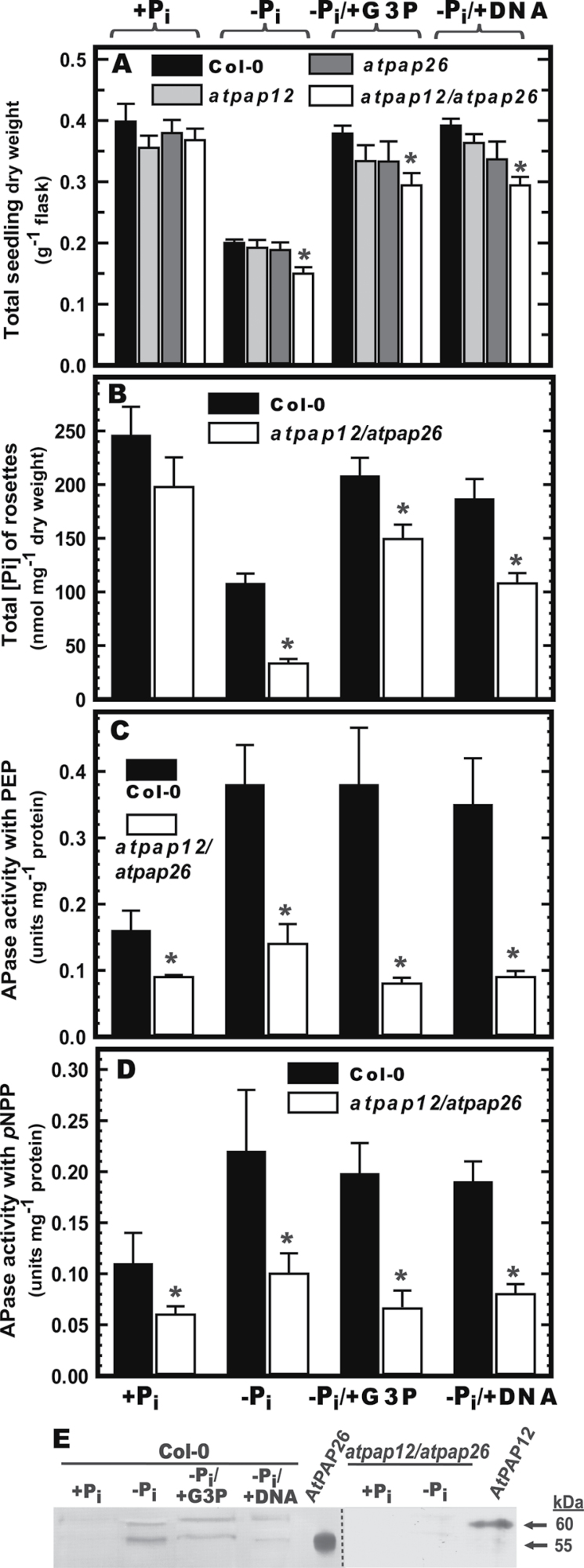Fig. 1.
Influence of different P supplements on biomass accumulation, rosette Pi concentration, secretory APase activity, and secreted AtPAP12 and AtPAP26 polypeptides of Col-0 and mutant Arabidopsis seedlings. Seeds (5mg) of Col-0, atpap12 and atpap26 single mutants, and atpap12/atpap26 double mutants were placed in 50ml of 0.5 MS medium containing 0.2mM Pi and cultivated on an orbital shaker at 24 C under continuous illumination (100 mol m2 s1). After 7 d, the seedlings were transferred into fresh medium containing 0 or 1.5mM Pi (Pi and +Pi, respectively), 1.5mM G3P (Pi/+G3P), or 0.6mg ml1 DNA (Pi/+DNA) and cultured for an additional 7 d. (A) Seedling dry weight per flask. (B) Total Pi concentration of rosette leaves. (C, D) Secreted APase activity of concentrated seedling culture filtrates of Col-0 and atpap12/atpap26 plants. Spectrophotometric APase activity assays were conducted using 5mM PEP (C) or 5mM pNPP (D) as described in Materials and methods. All values represent means SE of duplicate determinations for three biological replicates; asterisks indicate values that are significantly different from those of Col-0 (P <0.01). (E) Concentrated secreted proteins (15 g per lane) of Col-0 and atpap12/atpap26 mutant seedlings, and secretory AtPAP12 and AtPAP26 (25ng each) purified from the culture medium of Pi Arabidopsis suspension cells (Tran et al., 2010a ) were resolved by SDS-PAGE and electroblotted onto a polyvinylidene difluoride membrane. Blots were probed with anti-AtPAP12 immune serum (Tran et al., 2010a ) and immunoreactive polypeptides were detected as described in Materials and methods.

